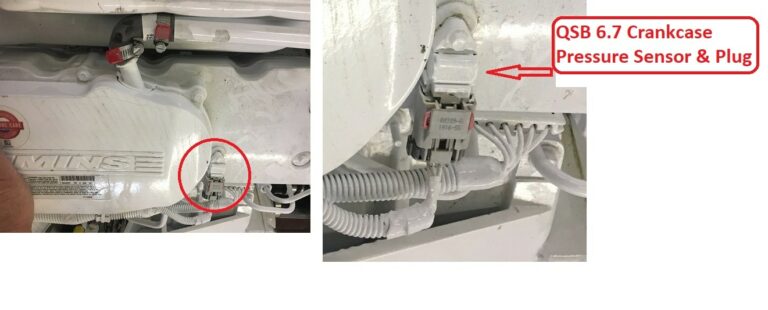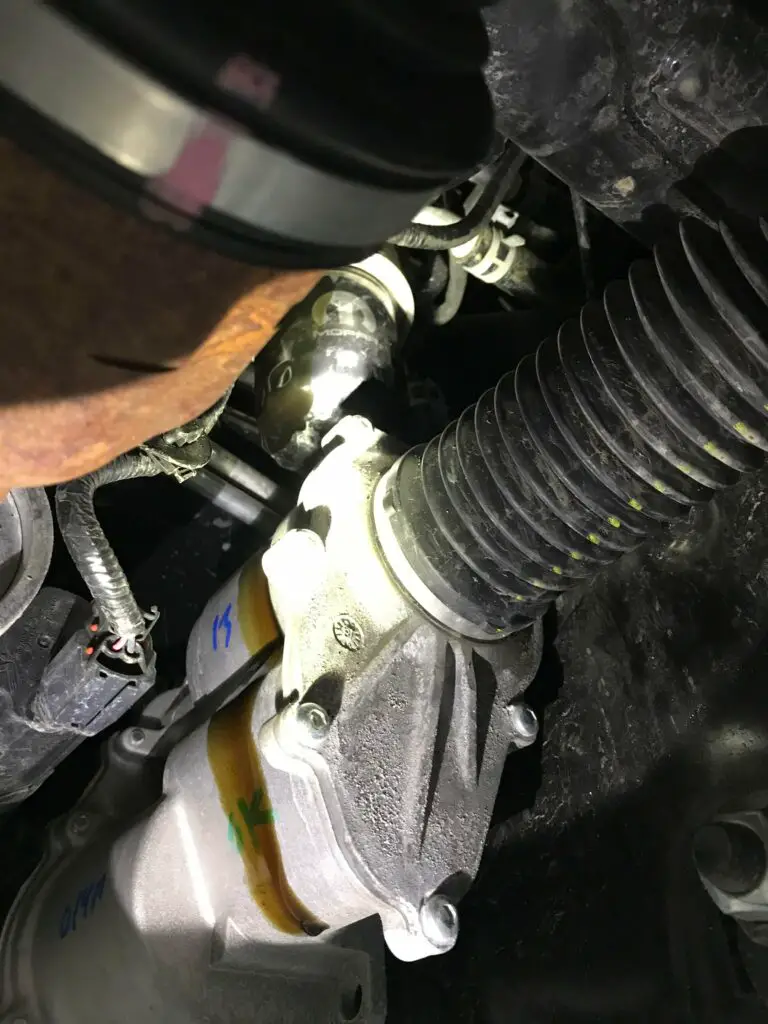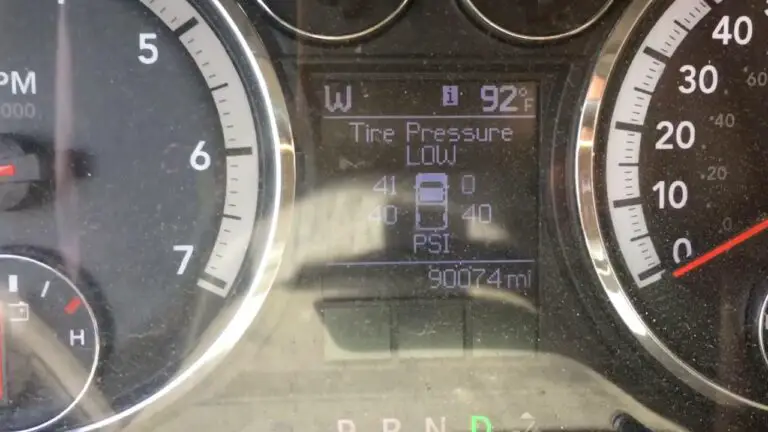5.7 Hemi Freeze Plug Location: Unveiling the Mystery
The freeze plug location for a 5.7 Hemi engine can be found at the rear of the engine block, on each side, down and to the rear of the knock sensor. Freeze plugs are vulnerable to rust and corrosion, which can cause leaks if the cooling system is not properly maintained.
Symptoms of a failed freeze plug include burning coolant smell, white smoke from the exhaust, and performance issues such as engine misfires. It is not recommended to drive with a leaking freeze plug, as it can lead to overheating and engine damage.
To stop a freeze plug leak, products like BlueDevil can be used.
Understanding Freeze Plugs And Their Significance
Freeze plugs, also known as expansion plugs or core plugs, play a critical role in the cooling system of your 5.7 Hemi engine. These small and seemingly insignificant components are actually essential for maintaining the proper function and performance of your engine.
What Are Freeze Plugs And Why Are They Important?
Freeze plugs are circular discs made of metal or galvanized steel that are inserted into specially designed openings in the engine block and cylinder head. These plugs are strategically placed in various locations throughout the engine to protect against damage caused by freezing coolant or excessive pressure.
When coolant freezes, it expands, and if there aren’t sufficient outlets for the expanding coolant, it can lead to catastrophic damage to the engine block or cylinder head. Therefore, freeze plugs serve as safety valves that pop out in such situations, preventing costly repairs.
Aside from their role in preventing freeze-related damage, freeze plugs also provide access points for cleaning and maintaining the cooling system. They can be easily removed and replaced when necessary, allowing for inspections, flushing, and repairs.
The Role Of Freeze Plugs In Engine Cooling Systems
The primary role of freeze plugs is to prevent engine block and cylinder head damage caused by freezing coolant. They are designed to pop out under high pressure, diverting the expanding coolant and preventing it from causing cracks or warping in the engine components.
By sacrificing themselves, freeze plugs protect more vital and expensive engine parts from potential damage. They act as sacrificial plugs that can be replaced easily and relatively inexpensively, saving you from costly engine repairs or even engine replacement.
In addition to freeze protection, these plugs also facilitate the maintenance and repair of the cooling system. They provide access points for flushing out coolant, inspecting for leaks, and addressing any issues that may arise within the system.
Overall, freeze plugs are an integral part of your 5.7 Hemi engine’s cooling system. They provide important safety features, prevent costly damage, and allow for easy maintenance and repairs.
Identifying Common Symptoms Of Freeze Plug Failure
One common symptom of freeze plug failure in a 5. 7 Hemi engine is the smell of burning coolant or white smoke coming from the exhaust pipe. Performance issues such as engine misfires can also indicate a problem with the freeze plugs.
Burning Coolant Smell And White Smoke From Exhaust Pipe
One of the most apparent symptoms of freeze plug failure is the presence of a burning coolant smell or white smoke coming from the exhaust pipe. When a freeze plug fails, it can allow coolant to leak into the combustion chamber, where it mixes with the fuel and creates a distinct burning odor. Additionally, the coolant can be burned off during the combustion process, resulting in white smoke being emitted from the exhaust pipe. These symptoms are clear indicators that there is a problem with the freeze plug and should not be ignored.
Performance Issues: Engine Misfires, Idling, And Acceleration Problems
Freeze plug failure can also manifest in performance issues with the engine. This can include engine misfires, where the engine does not run smoothly and may hesitate or jerk during operation. Idling problems may arise, such as a rough or fluctuating idle, or even stalling when the vehicle is at a stop. Acceleration problems are also common, with the engine struggling to pick up speed or lacking power when you press the gas pedal. These performance issues can be frustrating and can significantly impact the overall driving experience.
Common Causes Of Freeze Plug Failure
Freeze plugs, also known as expansion plugs or welch plugs, play a crucial role in the cooling system of an engine. These plugs are designed to prevent coolant leaks and maintain optimal engine temperature. However, freeze plugs can fail due to various reasons, leading to potential issues and expensive repairs. In this section, we will explore two common causes of freeze plug failure and their impact on the overall performance of your engine.
Rust And Corrosion: The Main Culprit
One of the primary culprits behind freeze plug failure is rust and corrosion. Most freeze plugs are made of metal or galvanized steel, which makes them vulnerable to the damaging effects of rust. If your engine cooling system is not properly maintained, moisture and acidic contamination can seep into the system, causing rust to form on the freeze plugs and other components.
Rust weakens the structure of the freeze plugs, making them more susceptible to leaks and failure. Over time, the rust can eat away at the plugs, creating holes or cracks that allow coolant to escape. This can lead to overheating issues, engine damage, and even complete engine failure if left unaddressed.
To prevent rust and corrosion-related freeze plug failure, it’s essential to maintain your cooling system regularly. This includes flushing the coolant, inspecting for any signs of rust or corrosion, and ensuring proper antifreeze levels. By taking these measures, you can significantly extend the lifespan of your freeze plugs and avoid costly repairs.
Poor Cooling System Maintenance And Its Impact On Freeze Plugs
Another common cause of freeze plug failure is poor cooling system maintenance. Your engine’s cooling system is responsible for regulating temperature and preventing heat buildup. If the cooling system is not properly maintained, it can lead to numerous issues, including freeze plug failure.
Inadequate maintenance can result in coolant contamination, blockages, or imbalances, leading to excessive pressure within the system. This increased pressure can cause freeze plugs to dislodge or rupture, resulting in coolant leaks and potential engine damage.
Additionally, poor cooling system maintenance can lead to issues such as air pockets within the system, which can lead to localized overheating and put additional stress on freeze plugs. Over time, this can cause the plugs to weaken and fail.
To prevent freeze plug failure due to poor cooling system maintenance, it’s crucial to follow the manufacturer’s recommended maintenance schedule. This includes regular coolant flushes, checking for any leaks or blockages, and ensuring proper radiator cap functionality. By maintaining your cooling system properly, you can avoid freeze plug failure and keep your engine running smoothly.

Credit: issuu.com
Locating The Freeze Plugs In A 5.7 Hemi Engine
When it comes to maintaining your 5.7 Hemi engine, it’s important to be familiar with the various components and their locations. One critical component that many people overlook is the freeze plugs. Freeze plugs, also known as expansion plugs or core plugs, play a crucial role in the engine’s cooling system by providing an opening for coolant to flow through the engine block. In this guide, we will walk you through the process of locating the freeze plugs in a 5.7 Hemi engine, ensuring that you have the knowledge to keep your engine in top condition.
Overview Of The Engine Block And Coolant Passage Networks
Before we dive into finding the freeze plugs, let’s first understand the layout of the engine block and coolant passage networks in a 5.7 Hemi engine. The engine block is the main housing for the cylinders, pistons, and other internal components of the engine. It is made of cast iron or aluminum and contains various passages for coolant to circulate and regulate the engine’s temperature.
The coolant passage networks are a series of interconnected channels within the engine block that allow coolant to flow from the radiator to the engine and back. These passages ensure that the engine remains at an optimal operating temperature, preventing overheating and potential damage to the internal components.
Step-by-step Guide To Finding The Freeze Plugs In A 5.7 Hemi Engine
Now that we have a general understanding of the engine block and coolant passage networks, let’s proceed with the step-by-step guide to locating the freeze plugs in a 5.7 Hemi engine:
- Start by ensuring that the engine is cool and the coolant has been drained completely. This will prevent any accidents or burns during the inspection process.
- Remove any necessary components that may obstruct your view of the engine block, such as the air intake system, covers, or accessories.
- Using a flashlight and mirror, carefully inspect the sides of the engine block. Freeze plugs are typically located on the sides of the block, where the coolant passages are present.
- Look for small circular metal discs that are press-fit into the engine block. These discs are the freeze plugs and can vary in size depending on the engine model and manufacturer.
- Take note of the freeze plugs’ locations and examine them for any signs of damage, such as leaks, rust, or corrosion. If any freeze plugs show signs of failure, they will need to be replaced to prevent coolant leaks and potential engine damage.
It’s important to keep in mind that the exact number and location of freeze plugs may vary depending on the engine model and manufacturer. Therefore, referring to the specific vehicle’s service manual or consulting a professional mechanic is always recommended.
In conclusion, locating the freeze plugs in a 5.7 Hemi engine is a straightforward process that requires careful inspection and knowledge of the engine block and coolant passage networks. By understanding the layout of your engine and properly maintaining the freeze plugs, you can ensure the longevity and optimal performance of your 5.7 Hemi engine.
Freeze Plug Replacement And Repair Procedures
In the world of automotive repairs, freeze plug replacement is not an uncommon task. Freeze plugs, also known as expansion plugs, are located on the engine block and serve an important purpose in the cooling system. Over time, these plugs can deteriorate, causing coolant leaks and potentially serious engine damage. In this guide, we will walk you through the preparation and step-by-step procedures for removing and installing freeze plugs in a 5.7 Hemi engine. It’s important to note that this guide is specific to the 5.7 Hemi engine, so the location and procedures may vary for other engines.
Preparation And Tools Required For Freeze Plug Replacement
Before you begin the freeze plug replacement process, it’s crucial to gather all the necessary tools and ensure you have a clean workspace. Here is a list of tools and equipment you will need:
- Socket set
- Wrench set
- Screwdriver set
- Freeze plug installation tool
- Rubber mallet
- Shop towels
- Coolant collection container
- New freeze plugs (make sure to get the correct size and material for your engine)
- Engine coolant
Once you have gathered all the necessary tools and equipment, find a well-lit and well-ventilated area to work on your vehicle. It’s also a good idea to have a reference manual or online guide specific to your vehicle make and model for additional assistance.
Step-by-step Guide To Removing And Installing Freeze Plugs In A 5.7 Hemi Engine
Now that you are prepared with the right tools and a clean workspace, let’s proceed with the step-by-step procedure for removing and installing freeze plugs in a 5.7 Hemi engine:
- Start by draining the coolant from the engine. Locate the radiator drain plug and open it to allow the coolant to flow out into a collection container. Ensure the engine is cool before proceeding.
- Once the coolant has drained, locate the freeze plugs on the engine block. The 5.7 Hemi engine has multiple freeze plugs, typically located on the sides and rear of the block. Refer to your vehicle’s manual or online resources for the specific locations.
- Using a socket or wrench, loosen and remove the bolts securing the freeze plugs. Be cautious not to damage the surrounding area or the plug itself.
- With the bolts removed, use a screwdriver or a freeze plug installation tool to carefully pry the old freeze plugs out of the engine block. Be gentle to avoid any damage to the block or surrounding components.
- Once the old freeze plugs are removed, clean the surface of the engine block where the plugs were located. Use shop towels or a soft brush to remove any debris or rust.
- Apply a thin layer of sealant or adhesive to the outer rim of the new freeze plugs. This will help create a tight seal and prevent future leaks.
- Using a rubber mallet, gently tap the new freeze plugs into place, ensuring they are seated securely and flush with the engine block.
- Tighten the bolts that secure the freeze plugs, making sure they are snug but not over-tightened.
- Refill the engine with the appropriate coolant mixture, following the manufacturer’s recommendations.
- Start the engine and check for any signs of leaks. If everything looks good, you can safely assume the freeze plug replacement process was successful.
With the freeze plugs replaced, your 5.7 Hemi engine should now be protected from coolant leaks and potential engine damage. Remember to properly dispose of the old coolant and dispose of any waste materials following local regulations. Regular maintenance and inspection of the cooling system will help prevent future freeze plug issues and ensure the longevity of your engine.
Frequently Asked Questions For 5.7 Hemi Freeze Plug Location
Where Is Freeze Plug Located?
Freeze plugs are typically located on the sides or at the bottom of the engine block.
What Are The Symptoms Of A Freeze Plug Failure?
Symptoms of freeze plug failure include burning coolant smell, white smoke from exhaust pipe, engine misfires, and performance issues while idling or accelerating.
What Is The Most Common Cause Of Freeze Plug Failure?
The most common cause of freeze plug failure is rust and corrosion. Moisture and acidic contamination can damage the freeze plugs and other parts of the cooling system, especially if the system is poorly maintained.
Can You Drive With A Leaking Freeze Plug?
Driving with a leaking freeze plug is not recommended, although it may be possible. Freeze plugs usually cause slow leaks and rarely fail completely. If you choose to drive with a leaking freeze plug, make sure to keep your engine coolant filled and prevent the engine from overheating.
However, it is always best to address the issue promptly and avoid further damage.
Conclusion
To keep your 5. 7 Hemi engine running smoothly, it’s important to understand the freeze plug location and signs of failure. Symptoms such as burning coolant smell, white exhaust smoke, and poor engine performance should alert you to check your freeze plugs.
Rust and corrosion are common culprits, caused by poor maintenance or acidic contamination in the cooling system. While driving with a leaking freeze plug is possible, it’s not recommended. Make sure to regularly inspect and replace freeze plugs to prevent further damage to your engine.








